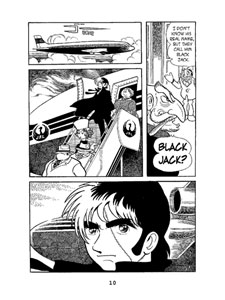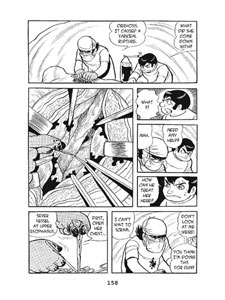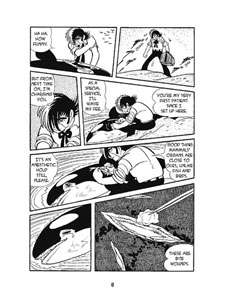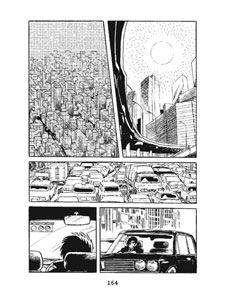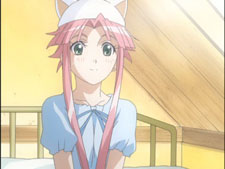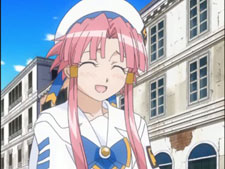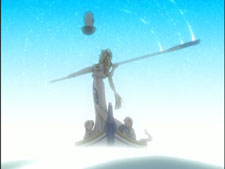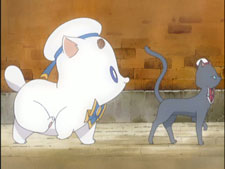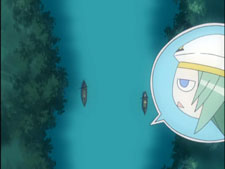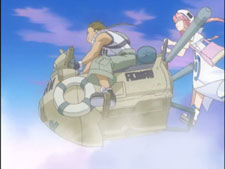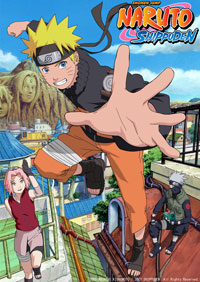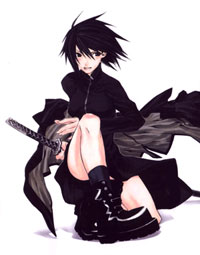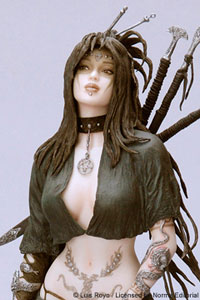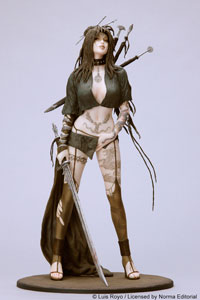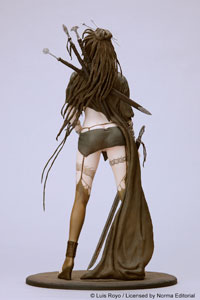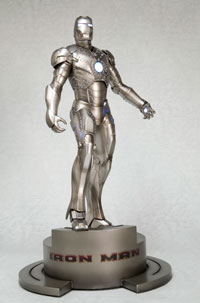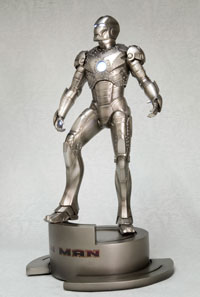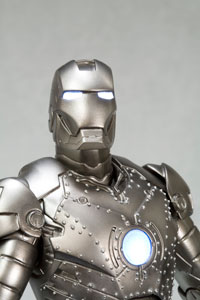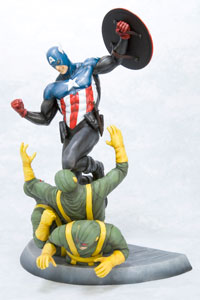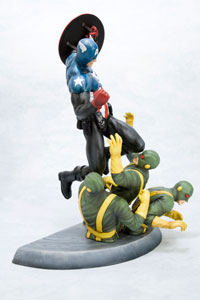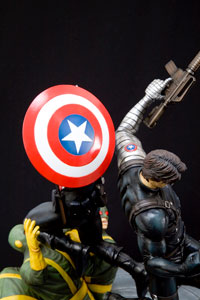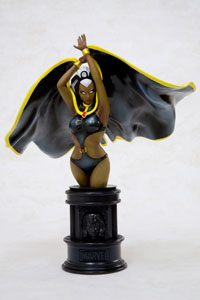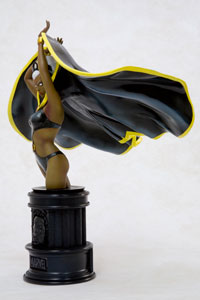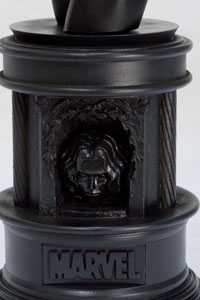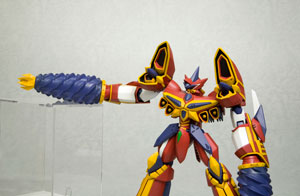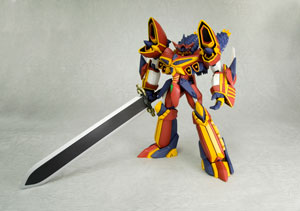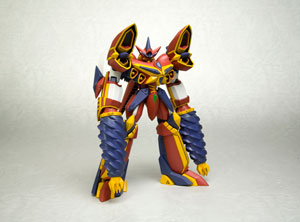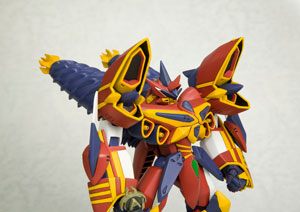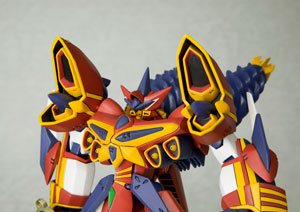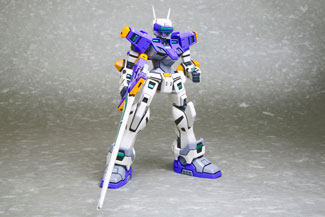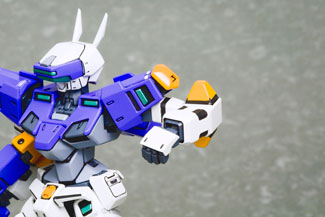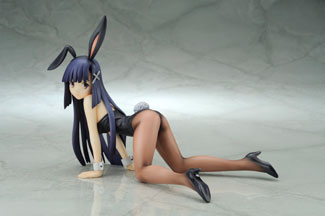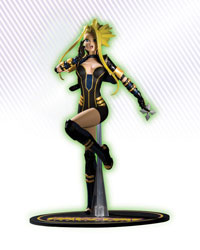 Logo handmade by Bannister
Column by Scott Green
Logo handmade by Bannister
Column by Scott Green

Win a Copy of Bat-Manga!
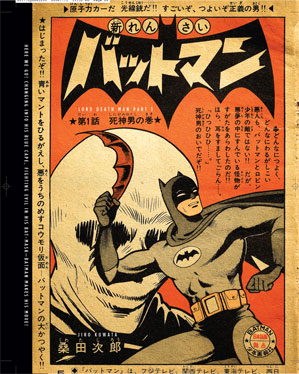


Be sure to check out The Girl Who Leapt Through Time on DVD This Week
Any commentator who posits that non-motion capture animation cannot re-create the essence of human motion and expression should be sat down with a copy of this movie. Time travel conceit aside, the movie is ingrained in the present day experiences of life in a modern, prosperous nation, set in houses, streets and schools. With light stylization acting as control factor in the demonstration, this work ought to prove that 2D animation is an irreplaceable, artistically viable form. The absence of an actor or physical model allows the image to be as loose or precise as the creator’s decision and ability can dictate. In the case of The Girl Who Leapt Through Time, that level of abstraction is what the movie needs to set the viewer on the same wavelength as its heroine. The seamless flexibility creates room for composition and ambiguity. In the case of this movie, this is what adds new meaning to what is explicitly not a new story. This technical merit contributes to the artistry that makes The Girl Who Leapt Through Time a joy to watch. Picking a film to recommend to any viewer, regardless of their affection for animation in general or anime specifically, this movie should top the list. Tapping into the universal concerns of what one is doing with one's life and where one's life is heading, the movie offers a mature engagement of youth that is more relevant and interesting than a simple coming of age. Though it cracks in the third act, the fissures complement what is a thought provoking challenge in the powerfully moving film. If you haven't seen the work in question, it might come as a surprise that The Girl Who Leapt Through Time director Mamoru Hosoda's best exposure to North American audiences would be the cobbled together Digimon movie. Previously hailed for his composition, detailed motion and eye for talented collaborators, given the freedom of his own movie outside Toei's studios he produces a work of art. Hosoda's approach is less obviously experimental than films like Mind Game. Working with Madhouse Studios, his animation makes the motion that one sees every day captivating, and the scenery of life something profound, worthy of close study. The movie is an updated retelling of a Tsutsui Yasutaka novel, previously adapted into a popular live action film and TV series. In Hosoda's updated version, titular heroine Makoto Konno gains the ability to physically leap and land in a chosen point in her past. Initially she uses the ability as an instrument of escapism, spending her time pursing inconsequential activities and goals. As chaos theory, unintended consequence and the momentum of life conspire to confront Makoto, she is forced to make more significant alterations. What was light hearted, laugh out loud, slapstick hardens into gut twisting drama. As the compounding repercussions become evident, the film taps into powerful emotions felt either in retrospect or in anxiety when concerning the effects of action and inaction in the pivotal moments of one's life. The revelation of the nature of Makoto's time travel broadens the scope of The Girl Who Leapt Through Time. It re-focuses the film to call attention to questions concerning the direction of the future, and the nature of art. Though essential and thought provoking, the information is introduced in such a way as to shove the film into a new angle. Given that the movie strongly encourages the viewer to share the lead's emotional progression, even if such a development is foreshadow, it still pulls the support out from under the narrative when the shift is introduced abruptly. Especially for a North American audience, the vast majority of which will be unfamiliar with the original story, the twist from what had been accepted as the premise of the movie, to the full set of facts is jarring enough to break the movie's hold. Yet, Hosoda spring it in a particularly heated sequence, where the shock is ensured, suggesting that this may have been his intended reaction. Studio Gonzo's first venture into feature length anime film is Origin - Spirit of the Past. A pivotal moment in the movie features its newly invigorated hero running as fast as he can. As his legs pound the earth, his torso is held parallel to the ground. This speed skate/run is a position that has been employed animating ninja or samurai running, and it does offer some dramatic heft, but in terms of human anatomy, the animated motion is distractingly nonsensical. Working off effectively abstract character designs from Evangelion's Yoshiyuki Sadamoto, Hosoda produces a studied recreation of human movement. Whether it is Makoto's titular leaps or an unnamed bystander in a crowd, there is a reality established in that the people move like people. Exact motion, and intensely recognizable expression are applied to design that is attractive and open. The balance creates characters that are very specific, but malleable for a viewer to imprint their own ideas. What makes The Girl Who Leapt Through Time brilliant also serves as a liability for getting the movie marketed. Rather than chasing after existing fans or serving as a vehicle for marketing other material, the movie doesn't just break out the anime ghetto, it ignores it. There is a degree to which The Girl Who Leapt Through Time does react to popular anime. It is informed by past versions of the story, the evolution of popular ideas of the future and bishoujo ideal. At the same time it rejects the pressure to distill anime production into algebraic formulas: if you like genre X or are of age Y, or previously enjoy Z, then you'll like A.
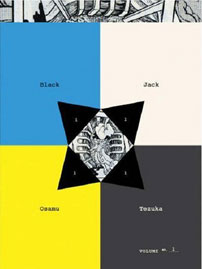
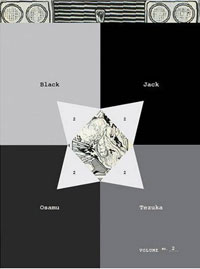
Manga Spotlight: Black Jack Volumes 1 and 2 by Osamu Tezuka Released by Vertical
No genre fan should pass up a chance to read "God of Manga" Osamu Tezuka's Black Jack. Looking at this creator's work can be bittersweet. In admiring his ability to construct stories that are visually striking, humane and topically fascinating, there is an upsetting corollary. Few creators have been able to equal what he did with the medium. A vital trait of the manga tradition is its willingness to piece together disparate elements and tones. A manga for children may be harsh and sophisticated, while a manga for adults might be innocent and whimsical. A haunting work of horror might be intercut with situation comedy. Few chefs are as adventurous with their ingredients as Tezuka is with Black Jack. It is the work of an interested and knowledge storyteller pursing their curiosity. Chiefly a medical adventure, drawing from Tezuka's own background as a licensed physician, the manga takes a detailed, scientific approach to both trauma surgery and medical oddities, but at the same time, it pulls from everything from robotics to the tradition that would be called "J-Horror" if rendered in live action (eye transplants that repeat visions from a previous owner, jinmenso tumors with a human face) and spins its own morality tales. To borrow an idea from when I wrote about an earlier translation of Black Jack, it's ER meets Isaac Bashevis Singer. Tezuka seems to be constantly trying exercise to new ideas, looking at dramatic situations, odd bits of history or lore and channeling it all into strange or shocking medical peril, with a moralistic poignancy. There is not much in the way of subtlety or ambiguity in the lessons of the manga. However, as in any Tezuka work, there is a sense that Tezuka is making a case for his beliefs. It's not simply moralizing to fulfill the requisite that shounen manga should have a hero who derives his success through virtue. Tezuka creates a debate in which his surrogate must defend his position from both extreme circumstances and counter examples. While Tezuka is preaching to the reader, it is honestly arrived at and considered rather than calculated. While it's been argued that Black Jack is Tezuka's most popular manga, the character himself is the antithesis to the other contender for that top spot. The man who goes by the name "Black Jack" is a rogue, unlicensed surgeon. Recognizable in person by a scar that divides the mismatched patches of skin on his face, his shock of white hair and his habit of dressing in an ominous black overcoat, Black Jack's legendary mercenary practices entail taking on any procedure, regardless of the difficulty or worthiness of the patient, as long as his exorbitant fees are paid.Black Jack stands as an anti-Astro Boy. Where the reader/viewer remembers Astro's origin, the character is not burdened by abandonment, a stripping of his identity, or slavery. He'll always be an innocent, open hearted boy, ready to react to the world. In the collected Astro Boy stories published in English by Dark Horse, Tezuka draws himself into the manga's introductions, complementing Astro Boy's new experiences with his own retrospective impressions. Like Astro Boy, Black Jack's first story begins with an auto accident. The father of the boy who almost killed himself begins calling in doctors. It's worth noting that the father is a doppelganger for Duke Red, a Tezuka villain who dates back to 1949's Metropolis, the son is the complex, but generally flawed Rock and the first doctor to be cowed by the demand to save the son is a doppelganger for Astro Boy's adopted father Professor Ochamanizu. The father bribes and threatens, but no doctor is willing to take the risk of losing the son on his operating table. Then, Black Jack is flown in. The first image is a full body shot of the character, stiff back, cape dramatically blowing in the wind as he walks down the plane's ramp. Next, there is a close up of Black Jack's scarred face, jaw set, looking piercingly out of the panel. A glance at Astro Boy calls for childhood enthusiasm to be welcome with like emotion. Black Jack radiates determined authority. This is a character that is not just able to stand up to any moral, ethical or physical challenge, he's actively prepared for it. (Except for when he's unprepared. Few Tezuka heroes are flawless) While Black Jack wears his origin across his face, the actual facts come out a piece at a time across a host of stories. These drips of history set the stage for other interactions that leave impressions. Each of these are powerful, but laid bare, outside the context of the stories in which the details are revealed, the whole truth of his beginnings don't have quite the impact of Astro's. However, even before his origin is known, it is evident from his face that past experience has prescribed its lessons on Black Jack. He's Tezuka's voice of authority, a commanding character, who knows he's one of the greatest talents in his field and who has already laid out his moral map of the world. Taste and publication models have put an emphasis on novelistic manga in the North American scene. Nothing is more popular than big chunks of running stories. Black Jack does not conform to that format. At least as captured in the first two volumes of Black Jack, the manga series is entirely comprised of short, distinct stories. In past columns I've pointed out a number of manga series that don't hold up well because they were written to be read as part of an anthology rather than in a collected volume. While Astro Boy generally has longer stories than Black Jack, I believe it's one such work. Though Black Jack's collections catalogue individual short stories, I find that they read well in the compiled form. Black Jack takes up the exploration of a philosophy. In Tezuka's samurai versus demon manga Dororo, he set the manga as a quest not unlike modern, best selling shonen titles (Naruto, Dragon Ball, ect). By the time that the manga ended at volume three, Tezuka seemed to be struggling with the direction into which the formula boxed him. In contrast, Tezuka could set a given Black Jack story however he wanted. If he desired a sci-fi installation in far off 197X, or an Arctic ice flow, or any other spot on the planet, he could take the manga there without impacting anything other than that specific story. For an author as interested and knowledgeable as Tezuka, but also as responsible, that freedom to test his champion under any circumstances is a great benefit. I'd speculate that you can trace at least part of Tezuka's innovativeness to his ability to survey the tools with which he had to work as an artist and a storyteller. In the case of Black Jack, foremost among those tools is the moral clarity of its character. Every story in Black Jack is a demonstration or a test of that foundation. The manga ran in Shonen Champion, home to Go Nagai's sexually goofy transforming magical girl forerunner Cutie Honey, and later to graphically violent manga like Apocalypse Zero and Baki the Grapper and moe concerned with recapturing blithe innocence, such as Nanaka 6/17. This wasn't written as young children's manga, but it wasn't seinen or gekiga for adults either. As an adult, I'm moved by the life and death consequences of Black Jack, and particularly the cases in which characters live on with what they experience in the story. That said, it's one of the manga series that provoke thoughts along the lines of "wow! if I read this when I was young and impressionable..." There is little wonder that generations of manga readers have kept Black Jack in their thoughts. It's a searing character in a searing manga. Even Black Jack seems to view himself as a sort of biblical judge in the field of medicine. He comes down with provocative harshness to set matters right. Beyond the two fisted surgeon side to the character, there's a willingness to re-channel the flow of life, whether through a finical charge that would take a lifetime to repay, directing someone to assume a new identity or causing them to rethink their moral perspective. As an adult reader in 2008, the method by which Tezuka forces Black Jack to demonstrate the justice of his beliefs is involving. While he's not above deck-stacking in his demonstrations, Tezuka seems to arrive at his morals honestly. He's not simply advocating for the sake of advocating. While many of the espoused points of view could spark debate, the humanism fits in well with a modern perspective, with a few sore thumb exceptions. His gender politics tend not to fit with a modern American perspective. At least one story in particular is going to have many readers rolling their eyes if not reacting more harshly. Beyond the ability to test Black Jack in story specific circumstances, another tool worth calling out in the manga is Tezuka's "star system." Tezuka looked to other media when formulating his approach to manga. He drew from classic animation. He looked at other manga and felt that much of it was too center-on stagey and instead attempted to replicate the flexibility of cinema. However, Tezuka was a theatre fan and borrowed the notion of a cast of "actors" to repeat throughout his manga. There are character designs that appear thorough Tezuka's body of work. Characters reappear in different manga. Specific characters in one manga are other characters in another. For example, Dororo's blind sword master is a blind acupuncturist in Black Jack. And, characters from one story are different characters in another. The above mentioned Rock is busy throughout Black Jack, as are the agents of institutional trouble Ham Egg and Acetylene Lamp (even better than the name, he has a candle attached to his head). Some of these cross-overs are simply crowd pleasers, such as cameos by Astro Boy, Sharaku the Three Eyed Boy or Dr Tezuka (wearing a fourth wall breaking "Why am I Here Anyways?" emblazoned jacket). Others elaborate on inter-work theme. Saruto/Gao of the complexly angry, deformed, talented and tragic figure of the Phoenix cycle makes a powerful appearance as Black Jack's inspiration. As mentioned, the gender politics of Black Jack are complex and not entirely at ease with modern positions. Yet the role of repeated women has an interesting mark on Black Jack. There are at least two worth looking out for. There's Melmo, based on a sex-ed manga about a nine year old girl. Following her mother's death, god gave her magical candy pills that would give her the body of a 19 year old so that she could take care of her younger brothers. And there's Sapphire, the heroine of Tezuka's proto-shoujo Princess Knight, about a princess with male and female hearts. These two appear in a number of guises throughout Black Jack, but there is also a particularly charged appearance by a variant on the Zephyrus character from Swallowing the Earth. Even if these character aren't entirely agreeable, the meta themes and star system implications are fascinating. I would not unequivocally recommend every Tezuka work. Many North American readers seem to be ambivalent about many of his manga title. While they're all what I'd call "book shelf manga," worth putting in a permanent spot in any library, I'd caution a lot of readers to know what they're in for when approaching something like the experimental sci-fi chapters of Phoenix. I have no such hesitation for Black Jack. It's written to be entertaining and provocative. That flexibility that it derives from not sticking to one over-arching story means that Tezuka can exercise his curiosity in pulling just about anything into his manga. From atomic bomb testing to biker gang brawls, Tezuka goes full bore.
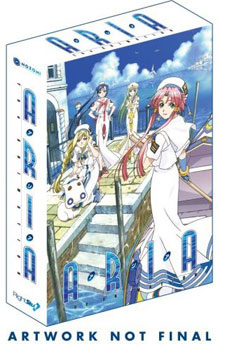
Anime Spotlight: Aria - The Animation Released by Right Stuf International
My formula calculation for Aria is "Hayao Miyazaki meets Azumanga Daioh". Like Miyazaki's work, Aria captures a simple virtuous beauty predicated on hard work. Like Azumanga Daioh, it largely dwells in the transitory moments between scheduled labors or studies, noting that these are typically what are most remembered. It finds a beautiful success in ensuring that the focus on down time and value given to effort are not contradictory. The sci-fi pastoral is set more than three centuries in the future. Young Akari Mizunashi immigrated from Manhome (nee Earth) to the city of Neo-Venezia on Aqua (terraformed Mars) to learn the trade of being an undine gondolier.The anime series finds Akari an apprentice in Aria Company. This is the smallest possible of these tour outfits, strictly comprised of Akari, the superlatively easy going, professional rank "prima" Alicia Florence, and the rolly polly cat "president" Aria Pokoteng (undine companies have blue eyed cats who are given the honorary office of president). Too low in rank to take customers by herself, Akari learns from Alicia, explores the corners and history of Aqua with Aria, and trains with two other apprentices. There's her peer Aika from the Himeya Company, a fanatical admirer of Alicia who never the less shoots down Akari's floridly delighted appreciations of the world around her as unallowed "sappy comments." (Whose drill sergeant instructor Akira had a similar relationship with Alicia). Then, there's Akari's younger friend Alice, a prodigy scouted by the Orange Planet company, possessed with a quiet, private demeanor. There is a genre of pop Japanese media (anime, manga, games) called iyashikei or 'healing' works. These are intended to calm the consumer, and offer a tranquil sense of appreciation and nostalgia. In many cases, these are works created for older, male audience whose female characters and pastel tones cause them to be directed toward female audiences when viewed in North America. This isn't to say that a work like Aria is not universally enjoyable, but, it is still informed by the fact that the original manga was serialized in Comic Blade, and as consequently aimed to express itself through cute girls. Like many of these iyashikei works, Aqua is largely about mood. It entrances, and one episode flows into the next. (I occasionally find it difficult to watch large amounts of anime one episode after the next, but I made it through half of the 13 episode set of Aria on a Sunday morning). Not much happens. If there's some great sci-fi device or some fairy tale conceit, it merely enables Akari to take in an appreciate some other part of her world. Even when she's working through some seemingly intractable task, there's little stress. She has what she needs, she's in no hurry to get where she's going, and everything is right. While Akari is not a particularly young character, and she's actively working towards ascending a career path, there's a childlike perspective at work, marked by a lot of splashing in puddles and wanderings. In the tradition of Azumanga Daioh, Yotsuba, and Kamichu, it is a nostalgic flashback to simpler times. At their worst, series with that mindset can be reductive or regressive, as escapism is turned into a full fledge retreat. The results are think-like-a-child shows that could be mistaken for kid's media; Nanaka 6/17 or Bottle Fairy for example. With the flood of dire financial news, many social critics have speculated that America will enter into a post-consumer culture . We will not be able to buy as much, which will force us to break our search for happiness through consumption. Aria looks to a future in which humanity labored to build a fresh start on a "hand made planet." Much of this new environment is artificial, with a surface flooded by human intervention, "salamanders" laboring to control the weather and "gnomes" working to manage the gravity. However, there is also a realness, in which people focus on maintaining a community, growing much of their own food, and working to earn what they need. While Aria does feature rivalries, envies and insults, all are gentled to the point of being good natured. It's about as utopian as possible without wholly rewriting human nature. There is one reference to a need to be on guard, in which teasing is mistaken for something worse. A quick response consisting of the threat of physical violence and a report to a higher authority, in the board who oversees tourism does suggest that criminal behavior is not entirely alien to Neo-Venezia. At the same time, what passes for conflict in the anime is really rudeness or awkwardness rather than aggression. I prescribe to the theory that much of human behavior is inherited from the species evolution in an environment of scarcity. We grab what we can, when we can, because instinctually we're considering a horizon in which we'll be without. Aria projects a future in which, once again, there are no supermarkets or big box retailers. Somehow, humanity has also shed that need to grab all it can in favor of appreciating having what is needed, and a little more to be enjoyed. In place of physical possessions, Aria puts a value on memories. It looks to remember the work and sacrifice that went into building Aqua, but also the undines' role of allowing others (tourists) to make their own memories. A factor that differentiates Aria from other iyashikei is that it is not entirely about transitory experience. The extent to which Azumanga Daioh is iyashikei is debatable, but it is a good point of reference. The manga/anime largely followed a group of high school girls as they progressed through their lives at students. It delighted in their friendship while tearing up about the ultimate termination point in that stage of life. At the same time, their homeroom teachers reminisced about their own school days and tried to capture a bit of that attitude. Aria acknowledges that Akari's time as an apprentice, in which she can spend her days with Aika and Alice, also have an expiration date. Yet, it does not posit that that is the end of her pleasant days. Alicia and Akira point out that they were happy in their youths and happy as adults. Their current state is not the same as their memories, but one does not trump the other. It's all about turning the present into tomorrow’s good memories. The great thing about Aria is that it finds a away to depict a character finding joy in the mundane and transmuting inconvenience or challenge into reasons for happiness without turning the mindset into the product of a mania. Akari and Alicia are not chemically imbalanced, pathological inversed depressives, they're honestly upbeat people. That said, I'm not entirely convinced that Aria isn't cheating or undercutting the on screen message. I'm not sure it welcomes critical thought. Especially stark in opposition to the "rightness" of Moribito mentioned in last week's review of that title, In Aria, it's easy to deduce things far sooner than the anime gives credit for being deduced. To some extent, either the message of the series is at odds with the intentions behind its creator, or, the message of the series do not evoke the same sentiments in the viewer. This is especially apparent in what the anime offers to latch onto. There are plenty of notes of geek appeal in Aria, with catch phrases and cutesy sounds, There's no shortage of Aria merch from cat plushie to cell phone straps to gashapon. Then again, I'm on record questioning Miyazaki, saying "Why do Miyazaki movies inspire wonder and adoration and not the values expressed within the movies themselves: virtue through work and responsibility, ecology, social justice? There have by efforts to save 'Totoro's Forest,', but does the experience of watching Spirited Away or Kiki's Delivery Service suggest that a parent should consider encouraging their child to take on more chores, or a child to take on more responsibility?" Even within the series itself, while hard work is ostensibly a key factor in Aria's equation, it eyes seem cast towards outings and nice meals. The labor part of forming the fond memories does not entirely come through.
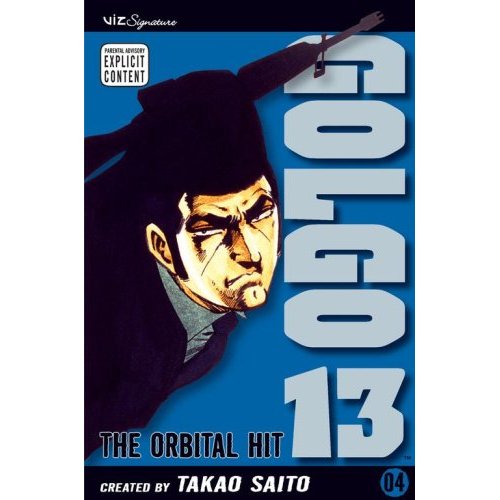
Manga Spotlight: Golgo 13 Volume 4: The Orbital Hit Created by Takao Saito Released by VIZ Media
Given that Naruto's North American release hits volume 32 this month, we've seen examples of the gargantuan libraries that a manga title can amass if it remains popular in its Japanese, serialized run. While that's a respectably large collection, Naruto has a while to go before it can really contend with the big boys. Detective Conan is over sixty volumes. Not counting the Steel Ball Run spin-off JoJo's Bizarre Adventure hit eighty volumes. Kochira Katsushika-ku Kameari Koen Mae Hashutsujo (This Is the Police Station in Front of Kameari Park in Katsushika Ward) or Kochikame for short, a title which has never been released in North America, is still running after 160 volume. Then, there's Golgo 13. Kept in print by legions of fans, who can claim new Prime Minister Taro Aso amongst their numbers, Golgo 13 recently commemerated its fortieth anniversary in an event featuring the manga's 72 year old author Takao Saito, Tetsuya Chiba (creator of classic boxing manga Ashita no Joe), Naoki Urasawa (Monster, Pluto, 20th Century Boys), Go Nagai (founder of the piloted giant robot, and transforming magical girl genres), Mitsutoshi Furuya and Fujiko Fujio (A). Part of what's interesting about this sustained reader support is that it does not leverage the rolling teen/adolescent audience on which something like Naruto relies. Instead, Golgo 13 is written for an audience that generally does not read many comics or manga in North America. Frederik L. Schodt's 1996 Dreamland Japan describes the Anthology in which Golgo 13 is published, saying: Big Comic: The grand-daddy of the Big family, Big Comic serializes works by big-gun artists. Long running stories have included the famous Golgo 13, by Takao Saito, about a Zen like professional assassin who always gets his mark; Hotel by Shotaro Ishinomori, about the inner workings of hotel life; and the gag strip Akabe-ei, by Hiroshi Kurogane. Don't look for sex and titillation here, though. This is serious stuff, written mainly by men over fifty and read by a faithful but aging male readership mostly over thirty.... Ads are scarce and are mainly for cars, marriage services, energy drinks, hair tonics, hair pieces, and so forth. If you read samurai manga Lone Wolf and Cub, you will be familiar with a type of character who lives by the Zen koan, "if you meet the Buddha, kill him." In the case of Lone Wolf, Ogami Itto recognized the truth behind his kill or be killed Road to Hell to the extent that he was willing to risk the life of his infant son. Named for Golgotha, the site of Jesus' crucifixion and the unlucky number, Duke Togo is the globe hopping, omni-talented gun for hire known as Golgo 13. Think of James Bond, a man who crosses international borders, entering into dicey situations, fighting men and (beep)ing women. (Takao Saito worked with Bond leading up to the launch of Golgo 13) Subtract the tension between the mission and moments of moral compunction or sentimentality. Subtract the glibness. Also, subtract the reason to support the character, whether it's nationalism or that this killer is "our guy," standing between the western world and SMERSH, SPECTRE or QUANTUM. The result is literally and explicitly a man of action, without a history or a motivation. See that expression that Golgo 13 is making on the cover? That's the same one you'll see on the characters face whether he's listening to the proposal for an outrageous mission, sitting in proximity to a man whose betrayal almost cost him his life, or engaged in sexual intercourse. Bits of Golgo 13 have been released in the US. Osamu Dezaki's 1983 anime movie The Professional: Golgo 13 and the 1998 OVA Golgo 13: Queen Bee (with John Di Maggio as Duke Togo) can still be found on DVD if you do some hunting. No one has announced plans to release the 2008 televised anime series in English. The live action movie Golgo 13: Assignment Kowloon, featuring Sonny Chiba, was released, but if its predecessor with Akio Ohtsuka ever made it over, I've never seen it. Amazingly, North American audiences did get Golgo 13: Top Secret Episode for the Nintendo, featuring the 8-bit generation version of smoking, sex and violence, but with (most of) the Nazi references excised. And, the game's developer/publisher Vic Tokai, along with Lead, and Viz published short runs and promotions of Golgo 13 manga in the mid, late 80's and early 90's. In 2006, Viz began publishing a 13 volume set of Golgo 13's greatest hits. The approach of cherry picking Golgo 13 stories is an issue to the extent to which you'd want to read as much Golgo 13 as possible. In terms of fracturing the narrative, with no pretence of an over-arching plot, or developing the character, selecting specific stories doesn't. In fact, the atomic nature of each story is one of the serial's conceits. Duke Togo is born into each story a veteran assassin, with the experience needed to carry out his mission. Many of the stories are exploited from the geo-politics news feed, but whether the president of the US is Carter, Ford, or one of the Bushes, the protagonist is the same age, without any "reboots" or attempts made to reconcile the fact that he has been operating for forty years.. As an aside, this agelessness also applies to the creators of the manga, as Takao Saito and Saito Production have become indistinguishable. While manga is generally produced by a creator or pair of creators, more often than not, a team of assistants contribute to the effort. While these workers are often uncredited, many of the best known manga creators have started in the industry in that capacity (Inu-Yasha's Rumiko Takahashi was an assistant under Kazuo Umezu, One Piece's Eiichiro Oda was an assistant under Nobuhiro Watsuki). Takao Saito might be 72, but a new Golgo 13 story does not look different than one produced decades ago. This isn't a function of Saito being immune to age or new influence. Rather than rely on assistants to fill in the time consuming work or apply their talents to gaps in the chief creator's, Saito Production evidently executes on a model laid out by Saito. As such, the style of almost goofy, exaggerated caricature with stiff figures, set against intricately rendered backgrounds and objects, as well as the mix of weapons tech and inflammatory politics, has persisted throughout the decades. The eponymous first story in Golgo 13: The Orbital Hit is a fine example of the manga's sentiments and its character's hyper-competence. In 1975, the American government backed itself into an affair comparable to a "sci-fi version of Watergate." Operation Damocles was put into orbit by a shadow space program. A manned, nuclearly armed false Soyuz would be prepared for retaliation against the Soviets, if the time came. Unfortunately, on the eve of the Apollo mission's rendezvous with the real Soyuz program, the false craft was battered by debris, leaving America's dirty laundry out for the Russians to see. For plausible deniability, and so the press could not track the preparation, President Ford okayed the recruitment of a man rated highly reliable by the CIA, with jet pilot qualifications... Duke Togo. This is the sort of manga written to read after being buffeted by a storm of ugly news headlines. The "sci-fi Watergate" bears out, with cataclysmic mistakes warranting cover-ups and cover-ups to the cover-ups, with the din of street protests and journalistic investigations hammering in the background. Golgo 13 comes through as a catalyst, a self-preserving instrument. With his crystallized MO, he's the one person not co-opted, foolish, or channeled by the flow of events. There's something classically cool about being the one needed to clean up the mess, rather than be part of it, but there's also an antisocial edge in being above the fray.. The second story assassinates class, then audaciously throws its calling card on top of the body. Published in November 1997, Golgo 13 is hired to kill a Dodi Al-Fayed doppelganger as the Egyptian magnate-heir Ahmad Al-Farid rides through a Paris tunnel with Princess Di. Another assassin from MI6 is on the job, and the results we recognize from August 31, 1997 take place. Between the reaction by the entrenched power players to Di's AIDS activism and the juxtaposition between exotic mechanisms and the horrifically real scene of the crash, the manga seems intent on tweaking the reader's sense of real events. The intent does not appear to be to come away thinking that there was a real conspiracy theory. However, it starts with what we accept as plausible: that a reaction to the accusation that past colonialism has caused modern woes, such as the African AIDS epidemic, would be to lash out at the accuser. It ends with graphically real consequence. In the middle, it throws us for a loop with byzantine plotting and Duke Togo involvement. Part of Golgo 13's appeal is related to enjoying the manga ironically. A staple of gag manga is to have Golgo 13's granite face loom over some mundane situation. Seeing such an absolute figure not react to lust, danger, pathos or incredible circumstances is laughable. The exploited from the headlines approach to current events is similarly worthy of an irreverent grin. At the same time, Golgo 13 is serious business. The evident effort plotting, and rendering set pieces, weapons and locations is frequently jaw-dropping. While manga is written for almost every conceivable audience, most of what we get in North America is published for a prominent subset of what was intended for teenage and younger readers. (The strongly recommend Electric Ant zine has a conversation with manga guru Frederik L. Schodt that touches on why few look to expand the scope of manga published in North America.) A manga written for 30+ year olds, one that seeks to let its reader process the complexities of history being made through the lens of an omnipotent killer, is something exceptional in the field of manga in North America. Golgo 13 has lasted forty years for a reason, making it an essential part of any thorough comic/manga collector's library.
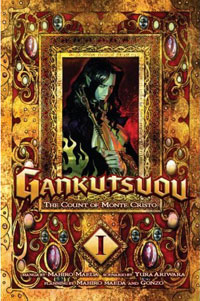
Manga Spotlight Gankutsuou: The Count of Monte Cristo Manga by Mahiro Maeda Released by Del Rey Manga
Anime to manga adaptations do not have a particularly sterling record. Too often, they seem like creations offering fans something to evoke memories of the anime or offering a substitute fix for those itching for more of what they enjoyed. At three volumes, the Gankutsuou manga is not some spectacularly realized epic. But, it does feature inspired illustration by Mahiro Maeda. Regardless of if you feel you need more Gankutsuou, the chance to see Maeda's captivatingly particular technique justifies seeking out the manga. "Gankutsuou," which translates to the "King of the Cave" was the title of Kuroiwa Ruiko's 1902 translation of Alexandre Dumas' classic vengeance adventure The Count of Monte Cristo. In 2004 GONZO produced an anime adaptation, distinguished by its sci-fi context and approach to animation in which the rich decor of the novel was captured by animating the characters and objects in front of elaborate textures. GONZO declared their position on the anime scene in 1998 with the CG animated OVA Blue Submarine No. 6. The piece was directed by Mahiro Maeda whose credits included animation on Ghibli films Nausicaä of the Valley of the Wind, Castle in the Sky, and Porco Rosso, and design work on Evangelion's angels (some might subtract some points for directing Birth aka Planet Busters). Post Blue Sub, he would go on to direct Second Renaissance in the AniMatrix and work as an animator on Kill Bill's Origin of O-Ren. While Maeda's vision for Gankutsuou has come into some criticism for being showy and obvious, the dominant reaction credited Maeda with creating a kaleidoscopic marvel. Without the space to grapple with the complexities of Dumas' novel, the manga leaves out significant figures and subplots, and still turns out overburdened with the task of introducing generations of characters and their relationships. While the manga offers a number of effecting scenes, these derive their impact from stand alone presentation rather than from the larger narrative. Strictly from the perspective of relating a plot, the manga falls into a no-man's land. As someone who made it through the novel, ostensibly for pleasure, I can understand the need for the manga's simplifications. When the manga deviates from what Dumas' laid out, it alters his themes, often straying into more unsatisfactory, nebulous territory. While a novel reader might find bits of the manga ill advised, I'm not sure that a fresh set of eyes will entirely know what to make of the plot. While it is certainly discernable to see what Gankutsuou does with its context, lunar Italian carnivale and mixing talk of Marseilles and with outer planets seems uncomfortably overloaded. When you run out of fingers to count the number of newly introduced characters significant enough to warrant a name plaque on the bottom of a panel, I have to wonder what the complexity has to offer the uninitiated. Despite the trouble of adapting a lengthy classic novel into an anime series, then adapting that anime into a brief manga series, Gankutsuou is still recommendable by virtue of Maeda's illustrations. There is an impression of an artist at work in Maeda's inked lines. You can almost see where he's sketching out the images and trying to work out the effects. If there hadn't been a Gankutsuou anime, the manga would make you wish that there were one. Maeda is not projecting backwards or re-creating the anime, but he is suggesting ideas that would be breath taking if fleshed out on a more substantial stage. The sketched character design is pleasant to look at, but the manga really comes into its own with its phantasmagoric scenes. Perhaps unexpectedly, these are reminiscent of Hayao Mayazaki work, such as Howl's eponymous castle, Princess Mononoke's Iron Town, Hayao Mayazaki's work on Nausicaa manga and mosaics of the anime's opening credits. If you're interested in manga technique, give Gankutsuou a look.

Science Fiction Museum and Hall of Fame Accepting 2009 Induction Nominees
EMP|SFM members are now able to nominate up to four creators in the field of science fiction to be inducted into the Science Fiction Museum and Hall of Fame. Nominations will be accepted through December 31, 2009. Once the deadline has passed our Hall of Fame Induction Committee, which is comprised of talented science fiction authors, artists and other professionals, will begin their deliberations and choose inductees from the names you provide. The museum will announce winners in early 2009. Finally, on the evening of June 27, 2009, EMP|SFM will hold the Science Fiction Hall of Fame Induction Ceremony. Each member may nominate one person in the categories of literature, art, Film/television/media and the open category (e.g., publishing, education, research, music). In 2008, the Science Fiction Hall of Fame honored Betty and Ian Ballantine (Literature Category), William Gibson (Literature Category), Richard M. Powers (Art Category) and Rod Serling (Film, Television and Media Category).
Digital Distribution
Crunchyroll announced a new strategic initiative with Tv Tokyo Corporation, Shueisha Inc. and Pierrot Co., Ltd. that will see episodes of episodes of the Naruto Shippuden, Gintama, Shugo Chara!, and Skip Beat! series, as well as a lineup of other "simulcast" on www.crunchyroll.com immediately following their broadcast in Japan, starting January 8, 2009. One objective of the partnership is to combat online piracy. "Crunchyroll's goal has been to provide a fully legitimate viewing platform so that anime fans can access the most popular titles in a timely manner from Japan via an authorized outlet. We are redesigning the site to ensure that all professionally-produced content is approved by licensors. This partnership with TV TOKYO, Shueisha and Pierrot is great validation for online distribution", said Kun Gao, CEO of Crunchyroll. "By providing more viewing options to fans and closing the release gap with domestic broadcast in Japan, Crunchyroll helps fans satisfy their craving for the latest anime while supporting rights holders' efforts to monetize their content. This is a very exciting time to be an anime fan!" "We understand that digital distribution is important in keeping our overseas fans happy and engaged with our titles", states Mr. Soichiro Hashi, General Manager for TV TOKYO's Animation Business, speaking on behalf of the three Tokyo-based partners. "We are listening to the needs of our overseas fan base and they clearly want to have access to titles earlier. We hope our online offering will increase legitimate viewing of our titles while making sure our worldwide fan-base is content as we attempt to fulfill the growing need for quality anime titles. Crunchyroll is an ideal partner for us because we both specialize in anime. Together, we will cater to an audience that will appreciate and support all the hard work of the creators and animators." Anime News Network reports that on January 8, Crunchyroll will stop accepting user-submitted videos and other content from individuals, and only host videos approved by copyright holders.* VIZ Media has announced near-simultaneous Japan-U.S. release of Naruto will stream on the official Naruto website www.Naruto.com, Beginning on January 15th the latest episode of the Naruto Shippuden (English-subtitled) animated series will be available for free viewing within days of its original airdate in Japan. A new English-subtitled episode will be added every Thursday thereafter. On January 2nd, VIZ Media will also debut, for free, 8 uncut, English-subtitled episodes from the beginning of the Naruto Shippuden series on www.Naruto.com. Each Friday thereafter there will be an additional 8 uncut, English-subtitled episodes added on Naruto.com until the series eventually catches up to the current third season of the hit program. Also, coming this week, an exclusive sneak peek of Naruto Shippuden (English-subtitled) debuting on Naruto.com.* Dentsu Inc. and Nippon Television Network Corporation have reach a joint agreement with the video streaming site Joost to provide content to the US market. Show to be offered include anime Buzzer Eater (basket ball sports anime) and Kaiji (gambling action) among six anime titles as well as variety shows Downtown no Gaki no Tsukai ya Arahende!!, Susume! Denpa Shonen, and HITOSHI MATSUMOTO VISUALBUM. The variety shows will be streamed free through the Japanese Humor ~Owarai~ channel. while the anime shows will be streamed through individually dedicated channels. The site will stream original Japanese versions of the shows with English subtitles. The service, which is scheduled to begin in December, will only be available in the US.
Upcoming in Japan
The Times Online note that a manga version of Karl Marx's Das Kapital from East Press is expected to make a big splash when its release in Japan next month. The ambitious comic rendering of Das Kapital is designed to parcel the complex economic theories of Marx’s hefty original in a format which Japanese adore digesting their information from; it will also be compressed into a size that can be slipped discretely into a Chanel evening bag, or slid into the top drawer of a desk when the bosses are looking. A sneak preview given to The Times reveals that Marx’s central themes are relayed in the comic via a cast of suitably down-trodden workers. Japanese publishers have historically used cartoons to explain thorny diplomatic relations with China, advanced wine-tasting and even the spread of bird flu: the manga version of Das Kapital takes on even the toughest concepts thrown up in the original, from “commodity fetishism” to the precise process by which “the expropriators are expropriated”. A trailer for Isekai no Seikishi Monogatari, the spin-off from the sci-fi action/relationship comedy Tenchi Muyo, from Masaki Kajishima, directed by Koji Yoshikawa (the second season of Grappler Baki) Viper’s Creed pilot footage The first of five Higurashi no Naku Koro ni Rei (When They Cry) direct to video OVAs will be released on DVD on February 25, 2009, and Blu-ray disc on March 25, 2009. Weekly Shonen Jump has announced that the Japanese serialization of of D.Gray-man has been put on hold while Katsura Hoshino attends to health problems. Via Anime News Network, Masahiko Ibaragi told KIDS STATION's Anime Paradise news program on Tuesday morning that he "thinks" that there will be a Tegami Bachi (Letter Bee) anime on television in 2009. A 30 minute short has been produced for the Jump Super Anime Tour. Viz will be releasing the manga in North America. Natsume Ono's Ristorante Paradiso, about a young woman working in the kitchen of a Roman restaurant will be adapted into an anime series that will replace Michiko to Hatchin on Fuji TV's "Noise" timeslot. Ultra Jump revealed that Shirow Miwa's Dogs sci-fi hitman action will be adapted into an anime series directed by Tatsuya Abe (Tona-Gura!) and written by Kiyoko Yoshimura (Chocolate Underground, Linebarrels of Iron). The original manga is scheduled to be released in North America by Viz in April 2009.Mayori Sekijima (Angel Sanctuary, MoonPhase, Video Girl Ai) will be overseeing a Xebec produced adaptation of Jun Mochizuki's Pandora Hearts supernatural action manga. The online listings for Enterbrain's Charaberrys magazine posted, then remove a notice that the magazine will feature "preview guide book for the new 07-Ghost show in April." There has been now official announcement of an anime adaptation of the manga, set to be released in North America by Go! Comi. Mayuri Yamamoto's horror manga anthology The Reset will be adapted into a live action TV show, to air on Japanese TV starting in January. Naoki Tanaka of the comedy duo Cocorico will star as a "time guide" who visits each episode's main character as he or she chooses whether to reset their lives at a time of crisis.
Cool Figures News
Yamato USA is accepting pre-orders of Fantasy Figure Gallery: Medusa’s Gaze now through November 21, 2008 with a Spring 2009 release on YamatoToysUSA.com The statue features Luis Royo’s stunning Medusa’s Gaze as interpreted by sculptor Shungo Yazawa.The second piece in Yamato USA’s Fantasy Figure Gallery, Medusa’s Gaze stands approximately 11.80” tall and comes complete with display base all packaged in a collector’s style window box. * Kotobukiya has announced a new slate of upcoming figures to be imported to the US from Japan. THE KOTOBUKIYA COLLECTION – MARVEL STUDIOS IRON MAN MOVIE MARK II FINE ART STATUE A KOTOBUKIYA Japanese import Sculpted by Kouei Matsumoto, the Iron Man stands nearly 13 inches tall (1/6th scale), and features metallic silver paint over cold cast porcelain construction. The Mark II features multiple LED lights: eyes, Repulsor Ray palms, and the Unibeam on his chest – each which glows with a cool blue hue. Iron Man stands confidently atop an ornamented base in the shape of his chest symbol, and sculpted with the Iron Man film logo. Each statue is individually numbered on the bottom of the base as part of a Limited Edition of 3000 pieces. srp $174.99 Available in MARCHIron Man, the Movie © 2008 MVL Film Finance LLC. Marvel, Iron Man, all character names and their distinctive likenesses: TM & © 2008 Marvel Entertainment, Inc. and its subsidiaries. All Rights Reserved. THE KOTOBUKIYA COLLECTION - MARVEL STUDIOS FANTASTIC FOUR: RISE OF THE SILVER SURFER SILVER SURFER FINE ART BUST A KOTOBUKIYA Japanese import Sculpted by Seijiro Manabe, 9", 1/6th scale srp $79.99 Available in JULY Marvel, The Fantastic Four and all related characters: TM & © 2008 Marvel Characters, Inc. All rights reserved. www.marvel.com. The Fantastic Four: Rise of the Silver Surfer, the movie: © 2007 Twentieth Century Fox Film Corporation. All rights reserved. MARVEL COMICS PRESENTS: THE KOTOBUKIYA COLLECTION CAPTAIN AMERICA: NEW CAPTAIN AMERICA FINE ART STATUE A KOTOBUKIYA Japanese import 13" tall old cast porcelain statue The base forms the other half of the Captain America shield symbol, matching up with the Winter Soldier Fine Art Statue. srp $174.99 Available in JUNE Marvel, CAPTAIN AMERICA: TM & © 2008 Marvel Entertainment, Inc. and its subsidiaries. Licensed by Marvel Characters B.V. www.marvel.com. All rights reserved. MARVEL COMICS PRESENTS: THE KOTOBUKIYA COLLECTION X-MEN CLASSIC CHAPTER: STORM FINE ART BUST A KOTOBUKIYA Japanese import 11", sculpted by Junnosuke Abe and made of sturdy cold cast porcelain. srp $79.99 Available in JUNE Marvel, Storm: TM & © 2008 Marvel Entertainment, Inc. and its subsidiaries. Licensed by Marvel Characters B.V. www.marvel.com. All rights reserved. MARVEL COMICS PRESENTS: THE KOTOBUKIYA COLLECTION X-MEN CLASSIC CHAPTER: KITTY PRYDE FINE ART BUST A KOTOBUKIYA Japanese import Sculpted by Yu Ishii, Kitty Pryde stands over 9 inches tall srp $79.99 Available in JUNE Marvel, Shadowcat: TM & © 2008 Marvel Entertainment, Inc. and its subsidiaries. Licensed by Marvel Characters B.V. www.marvel.com. All rights reserved. MSG: MODELLING SUPPORT GOODS ARMORED CAR UNITS 001-002 Each Armored Car is modular, with two distinct configurations. Scaled to most robot kits between 1/144 and 1/72 scales such as Armored Core or Super Robot Taisen, as well as other manufacturer’s figures or kits, from Gundam to Evangelion, these dark green model kits are easy to assemble and configure. ARMORED CAR 001 is “caterpillar-style” with tracked wheels and can be configured as a tank or crane. ARMORED CAR 002 has standard wheels and can be configured as a missile car or recovery vehicle. srp $19.99 each Available in MAY © Kotobukiya Co LTD SUPER ROBOT TAISEN: GRUNGUST TYPE-3 FINE SCALE MODEL KIT A KOTOBUKIYA Japanese import 7" non-scale figure The included pictorial assembly instructions make assembly easy, and painting is optional since the pieces are cast in different colored plastic. With over 335 parts, the giant robot has 30 points of articulation. srp $49.99 Available in MAY ©SRWOG Project CYBER TROOPERS VIRTUAL-ON TEMJIN FINE SCALE MODEL A KOTOBUKIYA Japanese import Second in the series of Fine Scale Models from the massively-popular video game series VIRTUAL-ON ORATORIO TANGRAM is MBV-G-04 TEMJIN. The Temjin stands over seven inches tall (in 1/100 scale like the previously offered Raiden), and is assembled from approximately 580 parts. srp $49.99 Available in MAY ©SRWOG PROJECT KANNAGI –CRAZY SHRINE MAIDENS- ~ ZANGE CHAN ANI*STATUE A KOTOBUKIYA Japanese import Based on the manga, soon to be adapted into anime. Included with Zange Chan is a cushion base made of soft, silky fabric. In scale with the other Kannagi –Crazy Shrine Maidens- girls (1/7th), she is 6 inches tall and comes packaged in a beautiful window box. srp $59.99 Available in MAY © ????/??? LINEBARRELS OF IRON: EMI KIZAKI in SWIMSUIT ANI*STATUE A KOTOBUKIYA Japanese import From the Bishoujo-themed LINEBARRELS OF IRON (Kurogane no Linebarrels) Ani*Statue series Sculpted by Sho Kojima, Emi is 3 ½ inches tall reclined, in 1/8th scale like the other Linebarrels Ani*Statues. srp $49.99 Available in MAY © 2008????•????•????/GONZO/???????????? TO ARU MAJUTSU NO INDEX: KUROKO SHIRAI ANI*STATUE A KOTOBUKIYA Japanese import The Japanese novel series and brand-new anime To Aru Majutsu No Index tells the story of a world where science-based superhumans live side by side with magic-users. Kuroko-chan stands almost 8 inches tall, in 1/8th scale with the other To Aru Majutsu No Index Ani*Statue girls. The pvc plastic sculpture is sculpted by Shoukaku Kitaike and comes packaged in a window box. srp $54.99 Available in MAY ©????/????•???????? TO HEART 2 –ANOTHER DAYS- TAMAKI KOUSAKA “TEMPTATION” ARTFX STATUE A KOTOBUKIYA Japanese import 9 inches tall (1/6th scale), constructed of pvc and abs plastics. srp $74.99 Available in MAY © 2007 Leaf/AQUAPLUS * AME-COMI: BLACK CANARY PVC FIGURE DESIGNED BY UDON STUDIOSThis limited-edition, non-articulated, 9” PVC statue comes with a base, is packaged in a 4-color window box with J-hook and is manufactured to order. on sale July 22, 2009 * Statue * $55 US AME-COMI: HUNTRESS PVC FIGURE DESIGNED BY PAITOON RATAN

